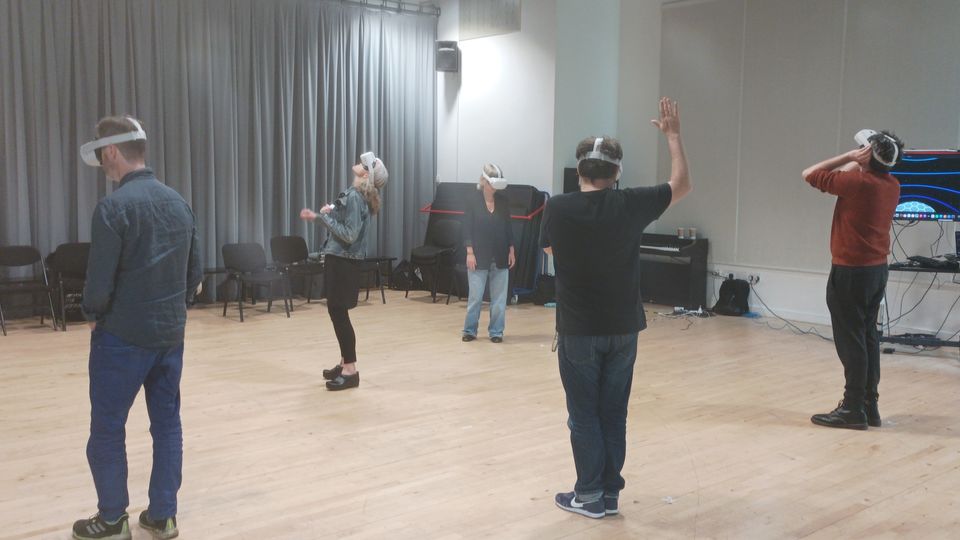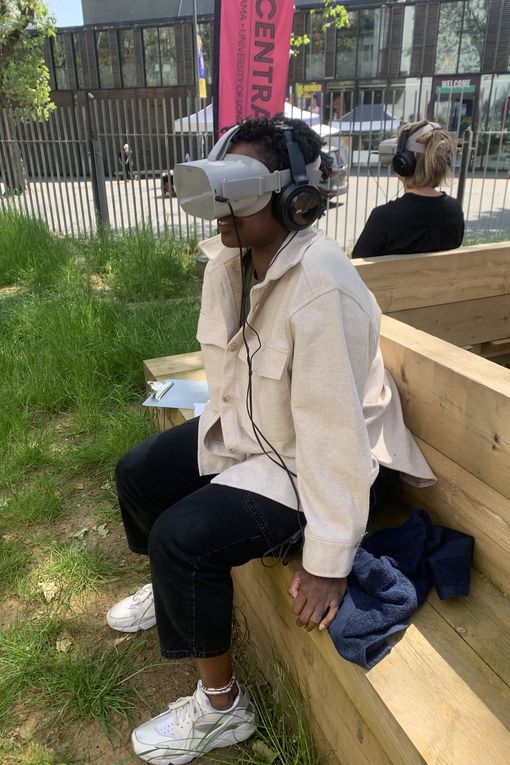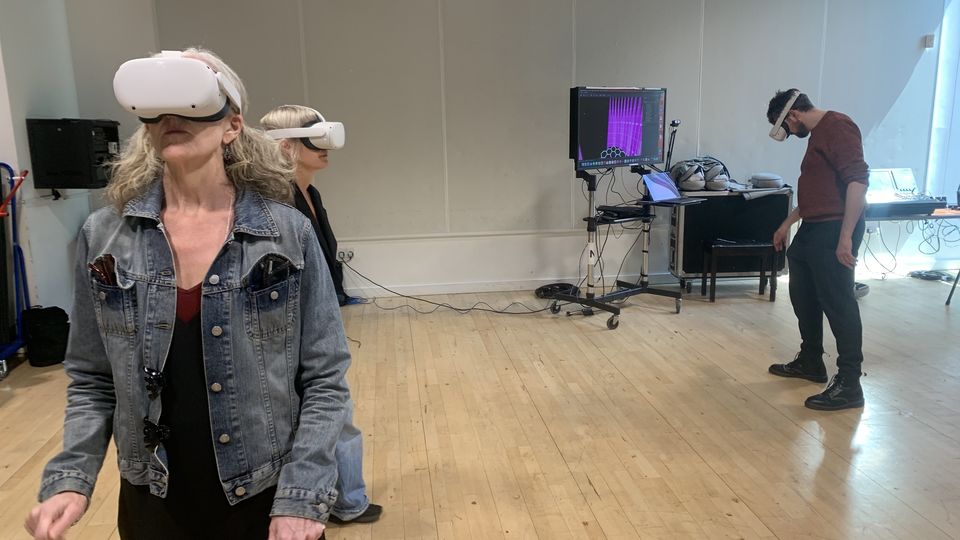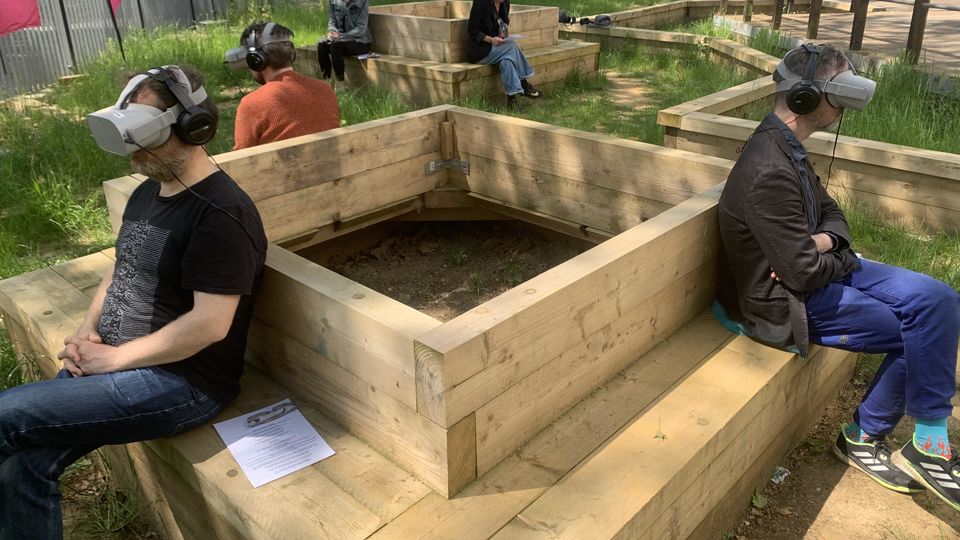The Potential of Virtual Reality in Theatre and Performance: Insights from the Performance Lab Sandpit
On Saturday 27 May, Central hosted a Virtual Reality (VR) sandpit event that brought together academics, researchers, and practitioners in the field of theatre and performance interested in VR. The event served as a platform for forging future collaborations and supporting the launch of Central’s Performance Lab - a hub for immersive performance and digital technology research and development. The event focused on exploring the potentials, trends, and challenges of VR in theatre and performance, with a view to provide a space for new discussions, insights and collaborations.
New media artist, researcher and lecturer at Central, Dr Nicola Plant who was a speaker at the workshop, reflects on her experience.

What was the structure of the sandpit?
The event began with introductions from myself and Jennifer Parker Starbuck (Royal Holloway, University of London.) We delved into the history, potentials and current reflections that VR offers to theatre and performance.
The morning session also featured three demonstrations from practitioners and researchers working in VR, showcasing the diverse applications of VR for theatre. Brú Theatre showed their 180-degree films, “Aras Aris,” that drew inspiration from Irish language literature on the theme of migration. Copper Candle demonstrated their VR hyper-reality tool, which allows for real-time control of a VR experience from a lighting desk and the Unreal Engine. Produced Moon, XR theatre lab based in Glasgow, showcased their participatory work exploring social and environmental themes in the creation of 360-degree film projects. During the afternoon session, C&T presented Prospero, an online platform designed for the development of educational and research resources for immersive and interactive learning.
A key part of the event was a space for in-depth discussion, focusing on research questions relating to the current trends, potentials, and challenges of VR in theatre and performance.

What critical aspects emerged from the conversations?
- There was a shared desire for more streamlined and less clunky VR technology. Attendees acknowledged that certain technologies, like Google glasses, did not meet expectations and that addressing connectivity issues and technical problems is crucial for further advancements, along with the need to adapt to the rapid pace of technological change.
- Attendees talked about an establishment of new forms of dramaturgies within VR and performance, questioning how narrative emerges in VR experiences. Dramaturgical transitions between different worlds within VR experiences were discussed, as was the possibility of unusual environments, such as water and space, considering how to navigate these spaces effectively and cohesively. Attendees explored the idea of being active participants in shaping the evolution of stories within VR. The need to view VR as its own art form, separate from traditional theatre, was emphasized.
- The notion of embodiment emerged as a key consideration. Attendees talked about how to engage the body while dynamically navigating a virtual space and the role of body language.
- A number of ethical concerns were raised during the discussion. Firstly regarding the reliance on systems owned by large corporations that prioritize profit-making, but also highlighting the importance of ensuring a democracy of access that consider the barriers faced by marginalized communities, such as the deaf, disabled, and neurodivergent individuals. On the topic of accessibility, attendees considered low-tech versions of VR experiences and the importance of engaging with communities to understand their interest and desires in relation to these technologies. The discussion of ethics also turned to the importance of safeguarding users was also considered.
- The concept of the Metaverse was discussed but elicited scepticism and uncertainty. The question of how artists can access these worlds/platforms in the Metaverse, not only as audience members but also as creators, was raised.
- Scaling up VR experiences to accommodate larger numbers was considered a positive. How VR experiences allow for accessibility to audiences in their homes, rather than solely at festivals or theaters, was of interest.
- The notion of focus and attention was explored, particularly in relation to 180-degree work, which requires the total attention of the audience in one direction. This concept contrasted with the perception of VR as a confusing or overwhelming space, prompting an exploration of the dramaturgy of the gaze.
- Sound was recognised as a powerful tool in creating a sense of liveliness within VR experiences.
- The possibilities of telepresence and digital touch were also explored, considering what VR does well and how it can enhance aspects that traditional theatre cannot achieve. The potential discrepancy between touch in VR and physical reality was considered, with some attendees viewing it as an interesting aspect rather than just a problem.

What did you take away from the sandpit?
The event provided a platform for differing perspectives, demonstrations, and discussions on the potentials and challenges of VR in theatre and performance. From exploring new forms of dramaturgies to addressing ethical considerations on accessibility, the event underscored the importance of collaboration and continuous dialogue for VR in theatre and performance as an evolving field.

